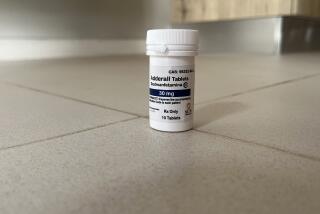For genetically modified animals, rules are ready
The Food and Drug Administration on Thursday opened the way for a bevy of genetically engineered salmon, cows and other animals to leap from the laboratory to the marketplace, unveiling an approval process that would treat the modified creatures like drugs.
The guidelines for the first time make explicit the regulatory hoops companies would have to jump through to sell engineered salmon that grow twice as fast as wild fish; pigs with high levels of healthy omega-3 fatty acids in their meat; or goats that produce beneficial proteins, such as insulin, in their milk.
“It’s about time the federal government has acknowledged that these animals are on its doorstep and need to be regulated to ensure their safety,” said Greg Jaffe, biotechnology director at the Center for Science in the Public Interest in Washington.
Many experts, however, say the proposed regulations may not go far enough to protect the public. In particular, they argue that the approval process would be highly secretive to guard the commercial interests of the companies involved, and that the new rules do not place sufficient weight on the potential environmental effect of what many consider to be Frankenstein animals.
Animals can’t be treated exactly like drugs, said Jaydee Hanson, a policy analyst at the Center for Food Safety in Washington. “Drugs don’t go out and breed with each other. When a drug gets loose, you figure you can control it. When a bull gets loose, it would be harder to corral.”
The animals are genetically modified for a variety of purposes.
Some are designed to be more disease-resistant, such as the cow that is not susceptible to mad cow disease. Others are more nutritious or grow faster, enhancing profits.
Researchers are considering modified animals as sources of organs for human transplants.
Another idea involves so-called biopharm animals, which would be used to produce drugs such as insulin.
“There are very compelling and real benefits for humans and animals” from genetic engineering, said William Flynn of the FDA’s Center for Veterinary Medicine.
“But we must show that they are safe before they enter the marketplace.”
The new regulations do not cover cloned animals, most pets or research animals. The FDA has already determined that clones -- genetic replicas -- are safe. Pets and research animals are unlikely to enter the food chain.
Only one genetically engineered animal is now being sold in the United States, the glow-in-the-dark zebra fish for aquariums. The FDA approved it because it is not eaten and its need for warm water effectively precludes its escape into the wild.
The first product likely to be sold under the new rules is a genetically engineered Atlantic salmon produced by Aqua Bounty Technologies Inc. of Waltham, Mass.
Inserted genes from two other fish allow it to reach full size in 18 months rather than the normal 30.
Aqua Bounty, along with other biotechnology companies, has been pushing the FDA to establish guidelines and hopes to win approval next year.
Technically, it is not the modified animals but the added DNA segments that are considered drugs.
Realistically, however, the only way to regulate the property-changing DNA is to regulate the animal, said Eric Flamm, a policy advisor at the agency.
That regulation will require demonstration that the modified animal itself is healthy and that a food or drug produced from it is safe for human use. The new rules do not envision feeding the products to humans in the equivalent of clinical trials for drugs.
Once an animal product has been approved, its labeling may or may not reflect its origin, the FDA said.
If the composition of meat or other food has been changed, such as by increasing its content of omega-3 fats, that will be put on its label. But if the animal simply grows faster or is more environmentally friendly without changes in composition, no mention of its genetically engineered origin is considered necessary.
The lack of labeling concerns consumer advocacy groups. Jean Halloran, director of food policy initiatives at Consumers Union, called it “incomprehensible.”
“Consumers have the right to know if the ham, bacon or pork chops they are buying . . . have been engineered with mouse genes,” she said.
--
thomas.maugh@latimes.com
More to Read
Start your day right
Sign up for Essential California for news, features and recommendations from the L.A. Times and beyond in your inbox six days a week.
You may occasionally receive promotional content from the Los Angeles Times.







